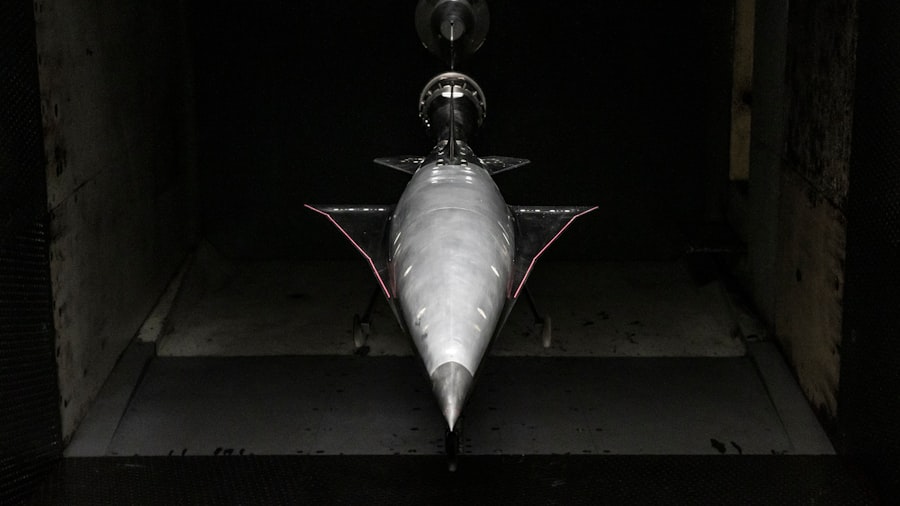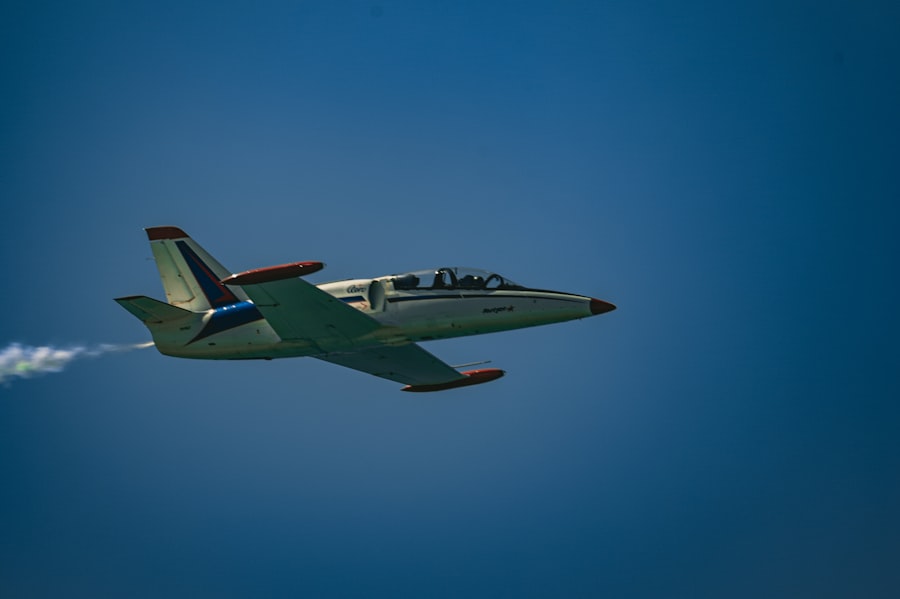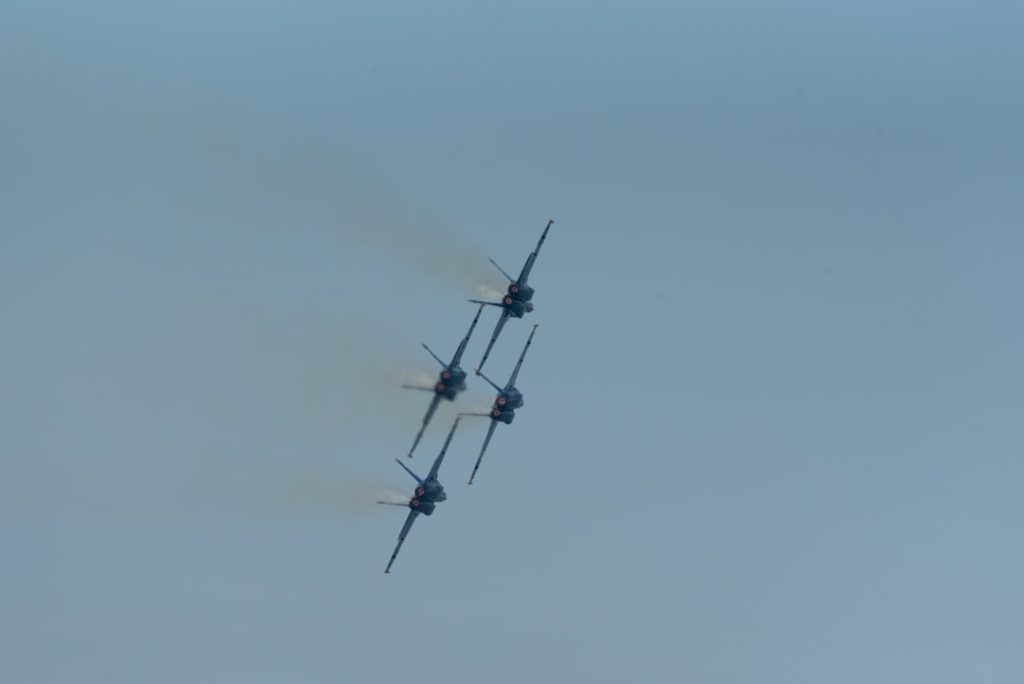Paras Aerospace has emerged as a significant player in the realm of unmanned aerial vehicles (UAVs), contributing to a transformative shift in how aerial operations are conducted across various sectors. Founded with the vision of harnessing cutting-edge technology to enhance aerial capabilities, Paras Aerospace has developed a range of UAVs that cater to both military and civilian applications. These UAVs are designed to operate in diverse environments, showcasing versatility and reliability that meet the demands of modern aerial operations.
The company’s commitment to innovation is evident in its continuous investment in research and development, which has led to the creation of advanced UAV systems that integrate sophisticated technologies such as artificial intelligence, machine learning, and advanced sensor systems. The UAVs produced by Paras Aerospace are not merely tools for surveillance or reconnaissance; they represent a paradigm shift in how data is collected, analyzed, and utilized. With the ability to operate autonomously or under remote control, these UAVs can perform complex missions with precision and efficiency.
The introduction of Paras Aerospace UAVs into the aerospace industry has not only enhanced operational capabilities but has also opened new avenues for exploration and application. As the demand for UAV technology continues to grow, Paras Aerospace stands at the forefront, ready to address the challenges and opportunities that lie ahead.
Key Takeaways
- Paras Aerospace UAV is a leading company in the aerospace industry, specializing in the development and production of unmanned aerial vehicles (UAVs).
- The impact of Paras Aerospace UAV on the aerospace industry has been significant, revolutionizing military and civilian operations with their advanced technology and innovation.
- Advancements in technology and innovation have allowed Paras Aerospace UAV to develop cutting-edge UAVs with enhanced capabilities and performance.
- The applications of Paras Aerospace UAV in military and defense have provided strategic advantages, including surveillance, reconnaissance, and combat support.
- Paras Aerospace UAV also has commercial and civilian uses, such as aerial photography, agriculture, and disaster response, making them versatile and valuable in various industries.
The Impact of Paras Aerospace UAV on the Aerospace Industry
The introduction of Paras Aerospace UAVs has significantly influenced the aerospace industry by redefining operational standards and expectations. One of the most notable impacts is the enhancement of data collection methodologies. Traditional methods of data gathering, often reliant on manned aircraft or ground-based systems, have been augmented by the precision and efficiency of UAVs.
For instance, in agricultural monitoring, Paras Aerospace UAVs can cover vast areas in a fraction of the time it would take conventional methods, providing real-time data that is crucial for decision-making processes. This capability not only increases productivity but also reduces operational costs, making it an attractive option for various industries. Moreover, the integration of Paras Aerospace UAVs into existing aerospace frameworks has led to improved safety protocols.
By utilizing UAVs for tasks such as infrastructure inspection or disaster response, human exposure to hazardous environments is minimized. For example, in the oil and gas sector, UAVs can inspect pipelines and offshore platforms without putting personnel at risk. This shift not only enhances safety but also streamlines operations, allowing companies to focus on core activities while relying on UAV technology for routine inspections and monitoring.
Advancements in Technology and Innovation

Paras Aerospace has consistently pushed the boundaries of technology and innovation within the UAV sector. One of the key advancements is the incorporation of artificial intelligence (AI) into UAV operations. AI algorithms enable these drones to process vast amounts of data in real-time, allowing for autonomous decision-making during missions.
For instance, in search and rescue operations, AI-equipped UAVs can analyze terrain and identify potential victims more efficiently than human operators could. This capability not only accelerates response times but also increases the likelihood of successful outcomes in critical situations. In addition to AI, Paras Aerospace has made significant strides in enhancing the endurance and payload capacity of its UAVs.
The development of advanced battery technologies and lightweight materials has resulted in drones that can fly longer distances while carrying heavier payloads. This is particularly beneficial for applications such as environmental monitoring or disaster management, where extended flight times can provide comprehensive data coverage over large areas. The ability to carry sophisticated sensors and imaging equipment further enhances the utility of these UAVs, making them indispensable tools for various industries.
Applications of Paras Aerospace UAV in Military and Defense
| Application | Metrics |
|---|---|
| Surveillance | Real-time monitoring, reconnaissance range |
| Intelligence gathering | Information collection, data transmission speed |
| Target acquisition | Precision targeting, accuracy |
| Combat support | Firepower delivery, operational endurance |
The military and defense sectors have been among the earliest adopters of UAV technology, and Paras Aerospace has positioned itself as a key contributor to this domain. The versatility of its UAVs allows for a wide range of applications, from surveillance and reconnaissance to logistics support and combat operations. For example, Paras Aerospace UAVs equipped with high-resolution cameras and advanced imaging systems can conduct intelligence-gathering missions with unparalleled accuracy.
This capability enables military forces to maintain situational awareness in real-time, facilitating informed decision-making during operations. Furthermore, Paras Aerospace has developed specialized UAV systems designed for electronic warfare and signal intelligence. These drones can intercept communications and gather critical data on enemy movements without exposing personnel to danger.
The integration of advanced jamming technologies allows these UAVs to disrupt enemy communications effectively, providing a tactical advantage on the battlefield. As military strategies continue to evolve towards more unmanned operations, the role of Paras Aerospace UAVs will likely expand, further solidifying their importance in modern warfare.
Commercial and Civilian Uses of Paras Aerospace UAV
Beyond military applications, Paras Aerospace UAVs have found a multitude of uses in commercial and civilian sectors. In agriculture, for instance, farmers are increasingly utilizing these drones for precision farming techniques. By employing multispectral sensors, Paras Aerospace UAVs can assess crop health, monitor irrigation systems, and optimize fertilizer application.
This data-driven approach not only enhances crop yields but also promotes sustainable farming practices by minimizing resource wastage. In urban planning and infrastructure development, Paras Aerospace UAVs are revolutionizing how projects are managed. Drones equipped with LiDAR technology can create detailed topographical maps and 3D models of construction sites, allowing engineers and architects to visualize projects before they commence.
This capability reduces errors during construction and ensures that projects adhere to regulatory standards. Additionally, in emergency response scenarios such as natural disasters, these UAVs can quickly assess damage and deliver supplies to affected areas, showcasing their versatility in civilian applications.
Environmental Benefits of Paras Aerospace UAV

The environmental benefits associated with Paras Aerospace UAVs are becoming increasingly recognized as industries seek sustainable solutions to their operational challenges. One significant advantage is their ability to conduct environmental monitoring with minimal ecological disruption. For example, UAVs can be deployed to monitor wildlife populations or assess habitat conditions without disturbing natural ecosystems.
This non-invasive approach allows researchers to gather critical data while preserving biodiversity. Moreover, Paras Aerospace UAVs contribute to more efficient resource management practices across various sectors. In forestry management, drones can be used to monitor tree health and detect pest infestations early on, enabling timely interventions that prevent widespread damage.
Similarly, in water resource management, UAVs can survey water bodies for pollution levels or monitor changes in water quality over time. By providing accurate data on environmental conditions, these UAVs play a crucial role in promoting sustainability and informed decision-making.
Challenges and Future Developments in Paras Aerospace UAV
Despite the numerous advantages offered by Paras Aerospace UAVs, several challenges remain that could impact their widespread adoption. Regulatory hurdles pose a significant barrier; as governments around the world grapple with establishing frameworks for UAV operations, companies like Paras Aerospace must navigate complex legal landscapes that vary by region. Issues related to airspace management, privacy concerns, and safety regulations require ongoing dialogue between industry stakeholders and regulatory bodies to ensure safe integration into national airspace systems.
Additionally, technological challenges persist as well. While advancements in battery life and payload capacity have been made, there is still a need for further improvements to enhance flight endurance and operational range. As missions become more complex and demanding, developing robust systems that can withstand adverse weather conditions or operate in remote areas will be essential for future growth.
Research into alternative energy sources such as solar power or hybrid propulsion systems may provide solutions that extend flight times while reducing environmental impact.
The Future of Aerospace with Paras Aerospace UAV
As we look toward the future of aerospace with Paras Aerospace UAV at the helm of innovation, it is clear that these unmanned systems will play an increasingly vital role across various sectors. The ongoing advancements in technology promise to enhance capabilities further while addressing existing challenges related to regulation and operational efficiency. With a commitment to sustainability and safety at its core, Paras Aerospace is poised to lead the charge in redefining how aerial operations are conducted.
The potential applications for Paras Aerospace UAVs are virtually limitless; from revolutionizing agricultural practices to enhancing military strategies and improving environmental monitoring efforts, these drones are set to become indispensable tools in our modern world. As industries continue to embrace this technology, collaboration between manufacturers like Paras Aerospace and regulatory bodies will be crucial in shaping a future where UAVs operate seamlessly alongside traditional aviation systems. The journey ahead is filled with opportunities for innovation and growth as we explore new frontiers in aerospace with Paras Aerospace leading the way.


